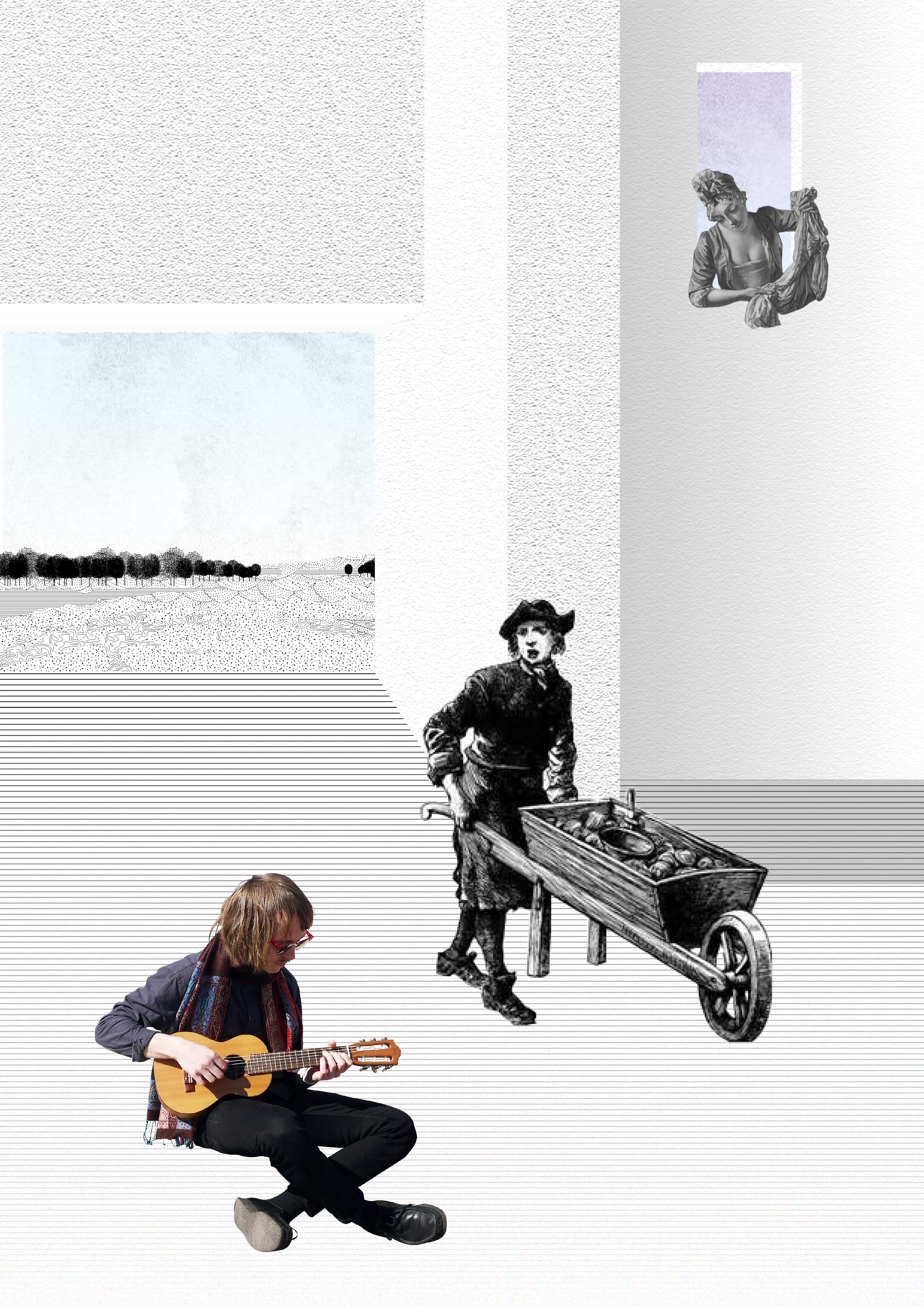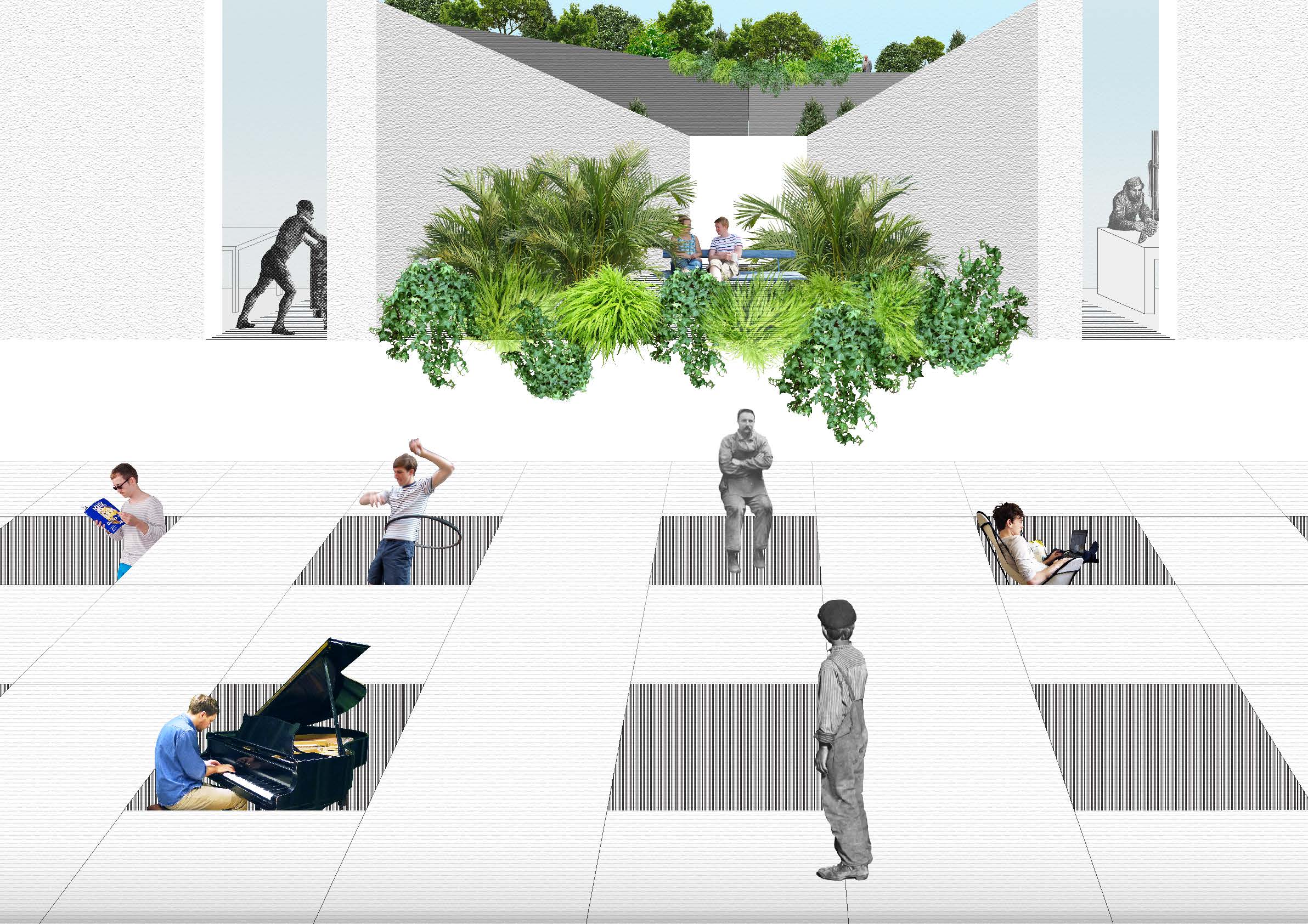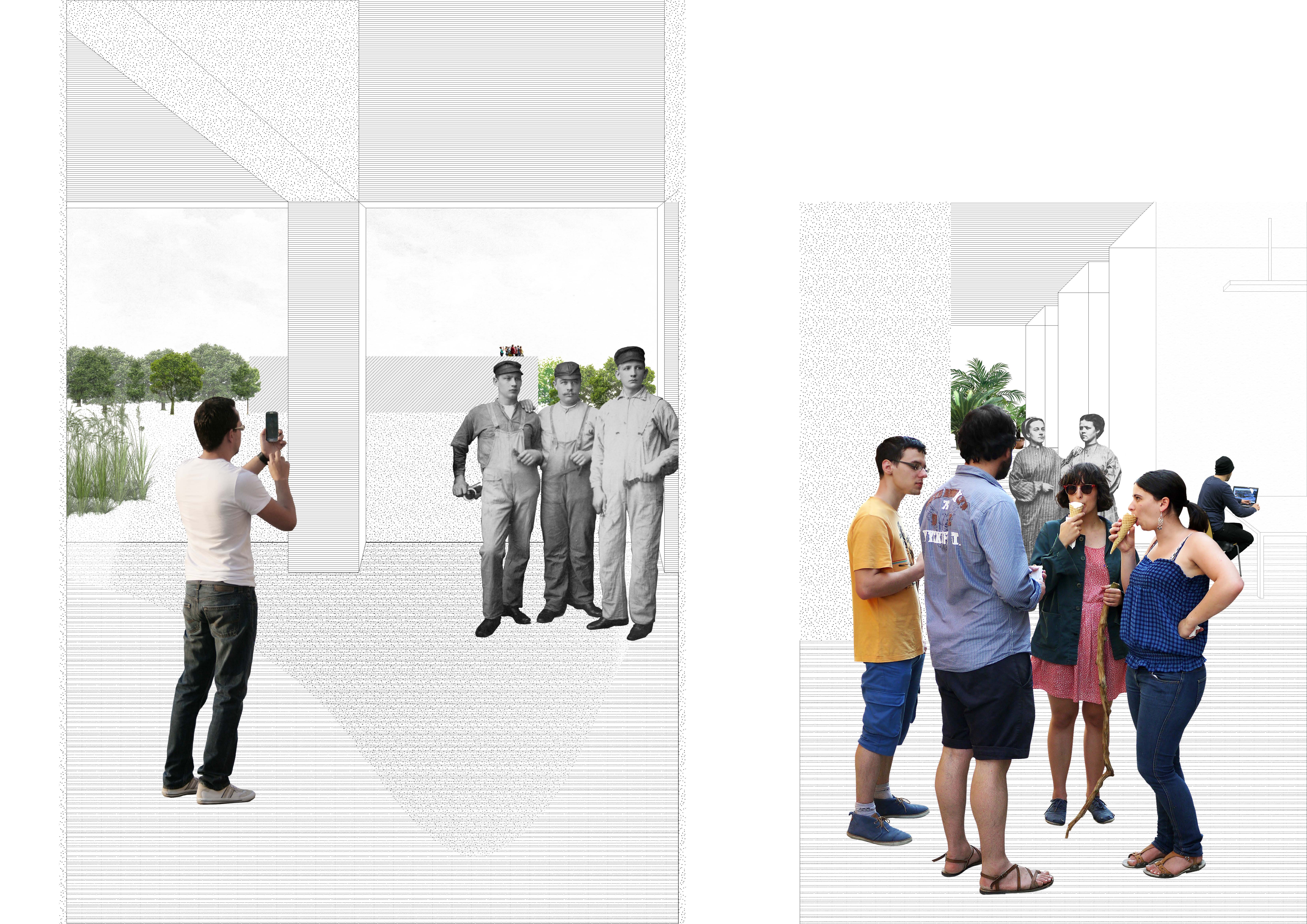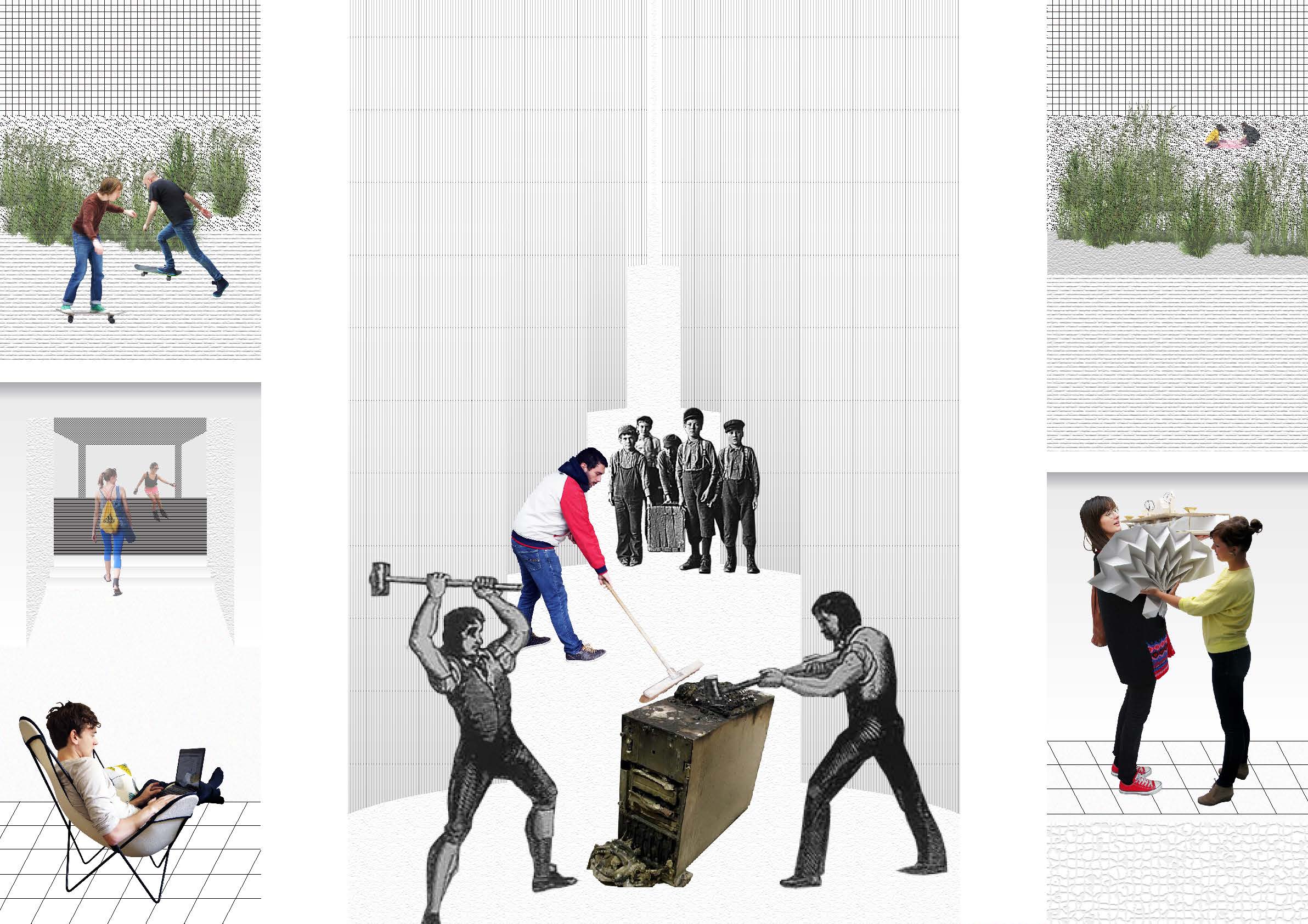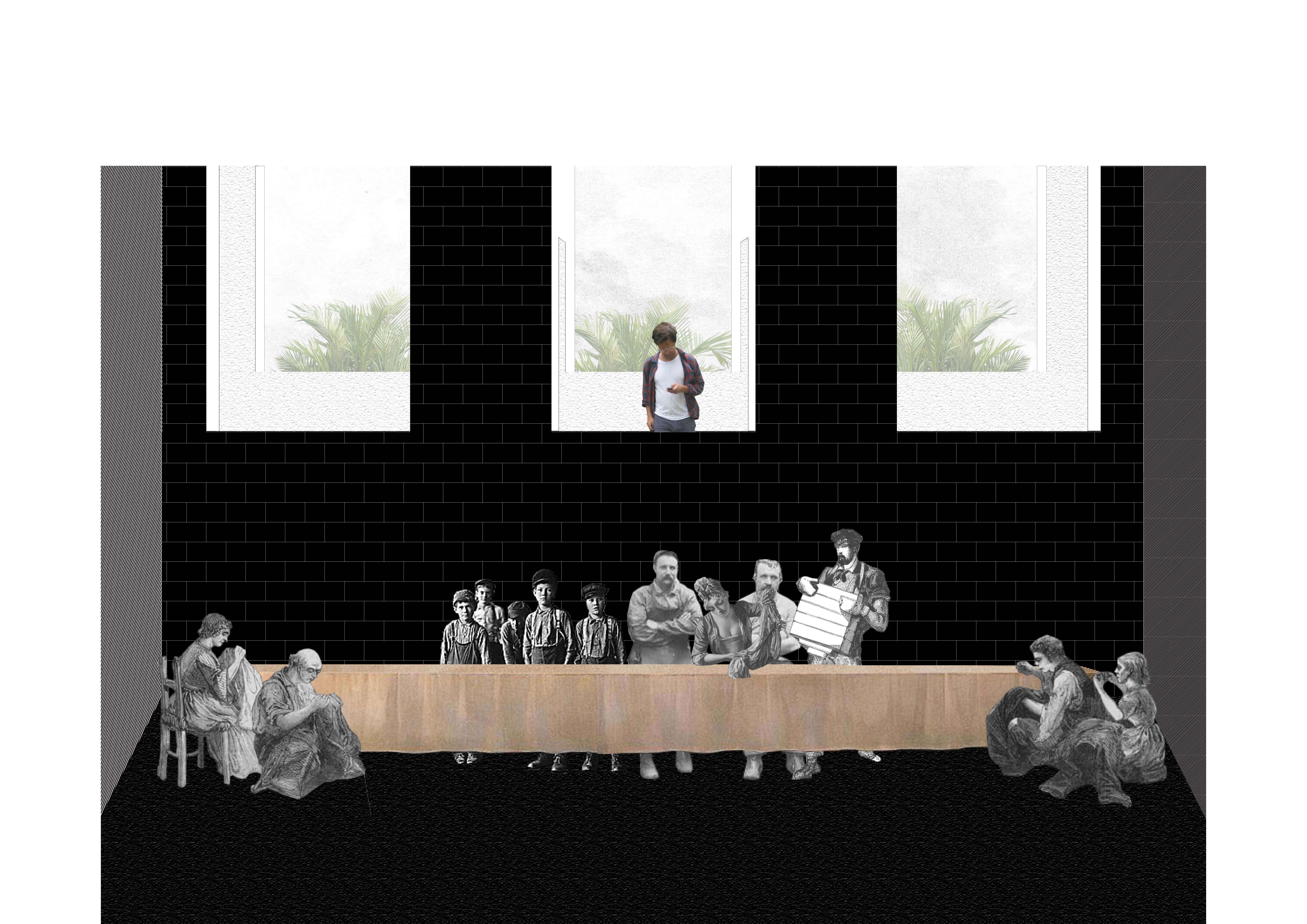Architecture Through the Looking Glass: Perception and Meaning In Architectural Representation
1871 (Merchandise Mart, Chicago, present) and the North American Phalanx (Colts Neck, NJ, 1843): Two communities, two collaborative agendas, divergent ideas about labor and leisure. What if 1871 were re-envisioned as a dispersed campus that, architecturally, is as much for work as it is for education and recreation?
Worktopia: How did the organization of the historical utopian community impact the behavior of its populace and how has it carried on to notions about contemporary work and the workplace? Post-1871 is a new co-working hub and collaborative for work-play - the inevitable merger of labor and leisure through digital technology and architecture. Members can enjoy the benefits of working remotely on a spacious rural campus - symbolically located at the former site of the North American Phalanx which burned down in 1972, 101 years since the Great Chicago Fire. The old informs the new. Alienation in advanced capitalist society is mitigated at Post-1871 where members can channel their alienation into personal productivity for the benefit of the community.
The Drawing Is the Project
Post-1871's early design saw the drawing itself become the project - extracting unique qualities of lines and grids (grid/scapes) to compose, organize and inform the community's planning. These qualities include pixelation, fidelity, resolution, homogeneity, density, and dispersion.
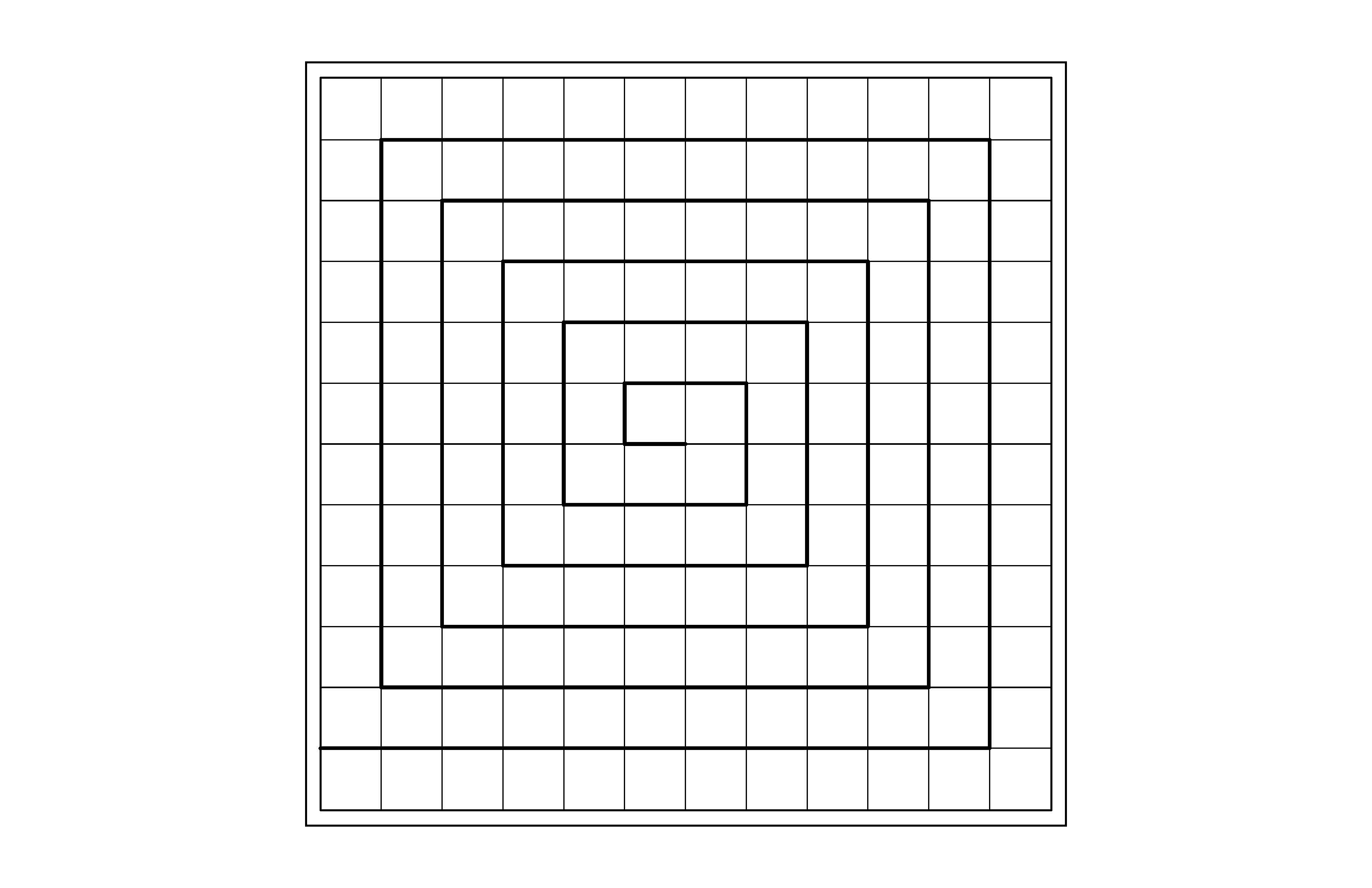
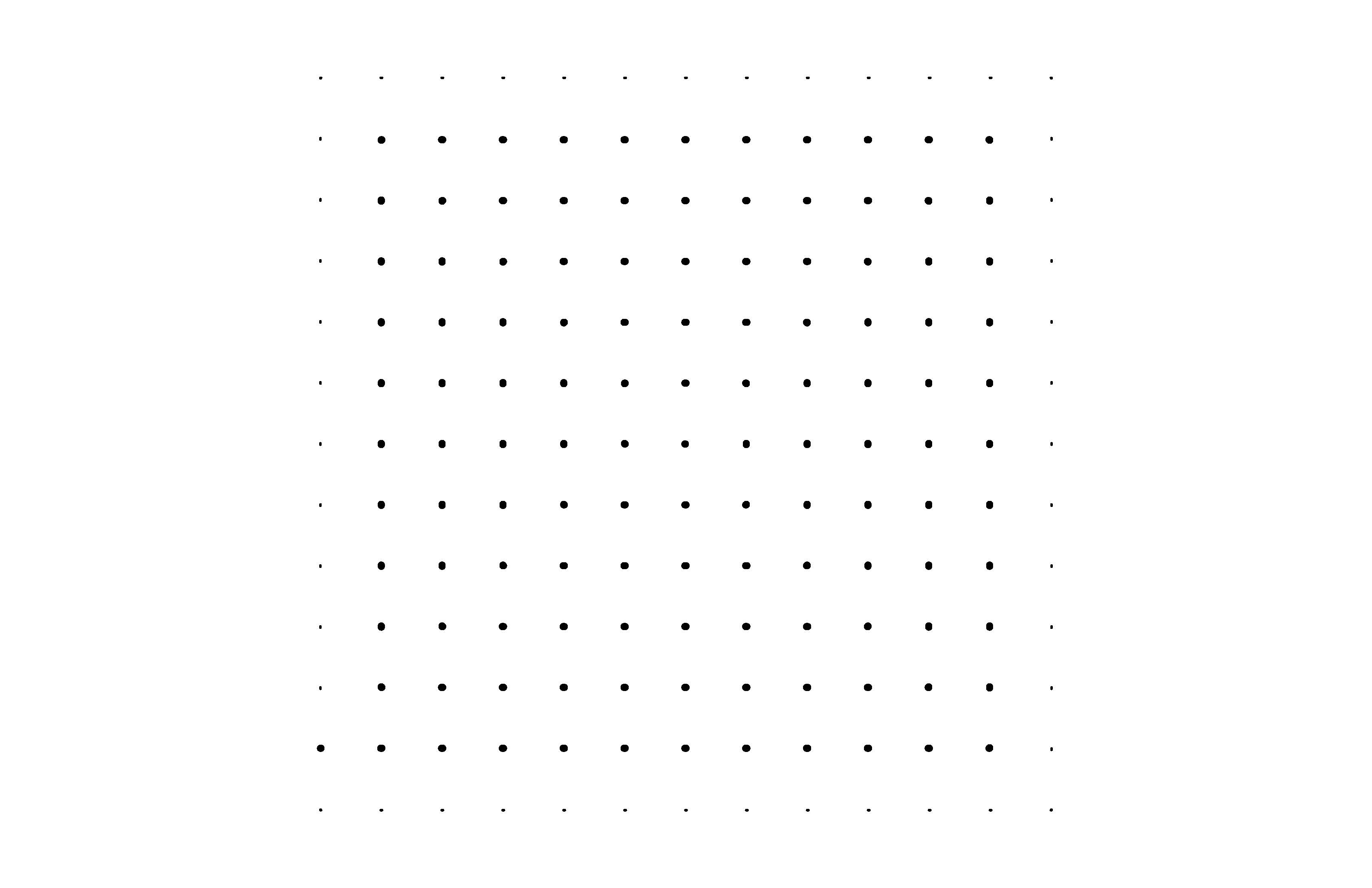
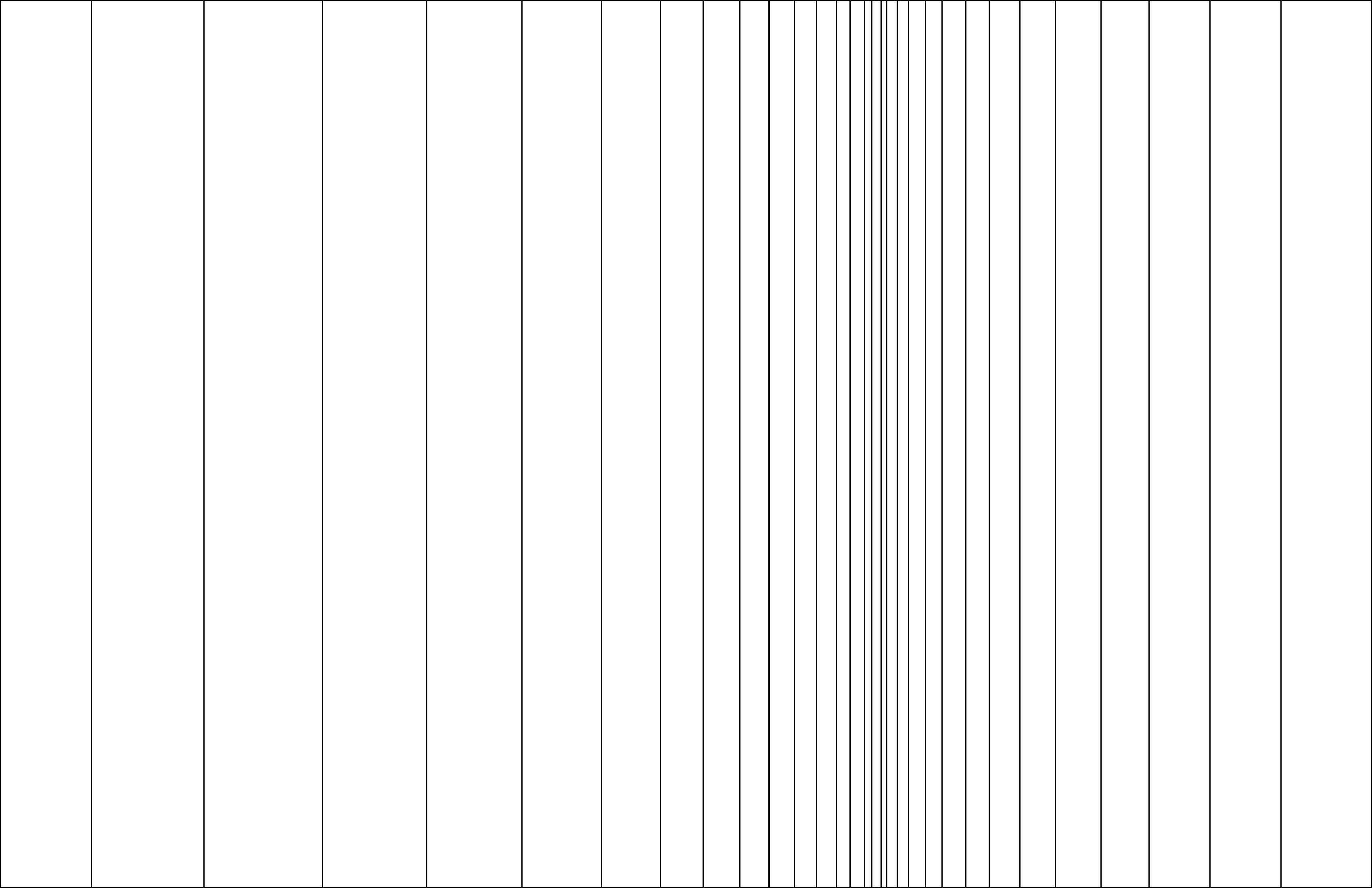

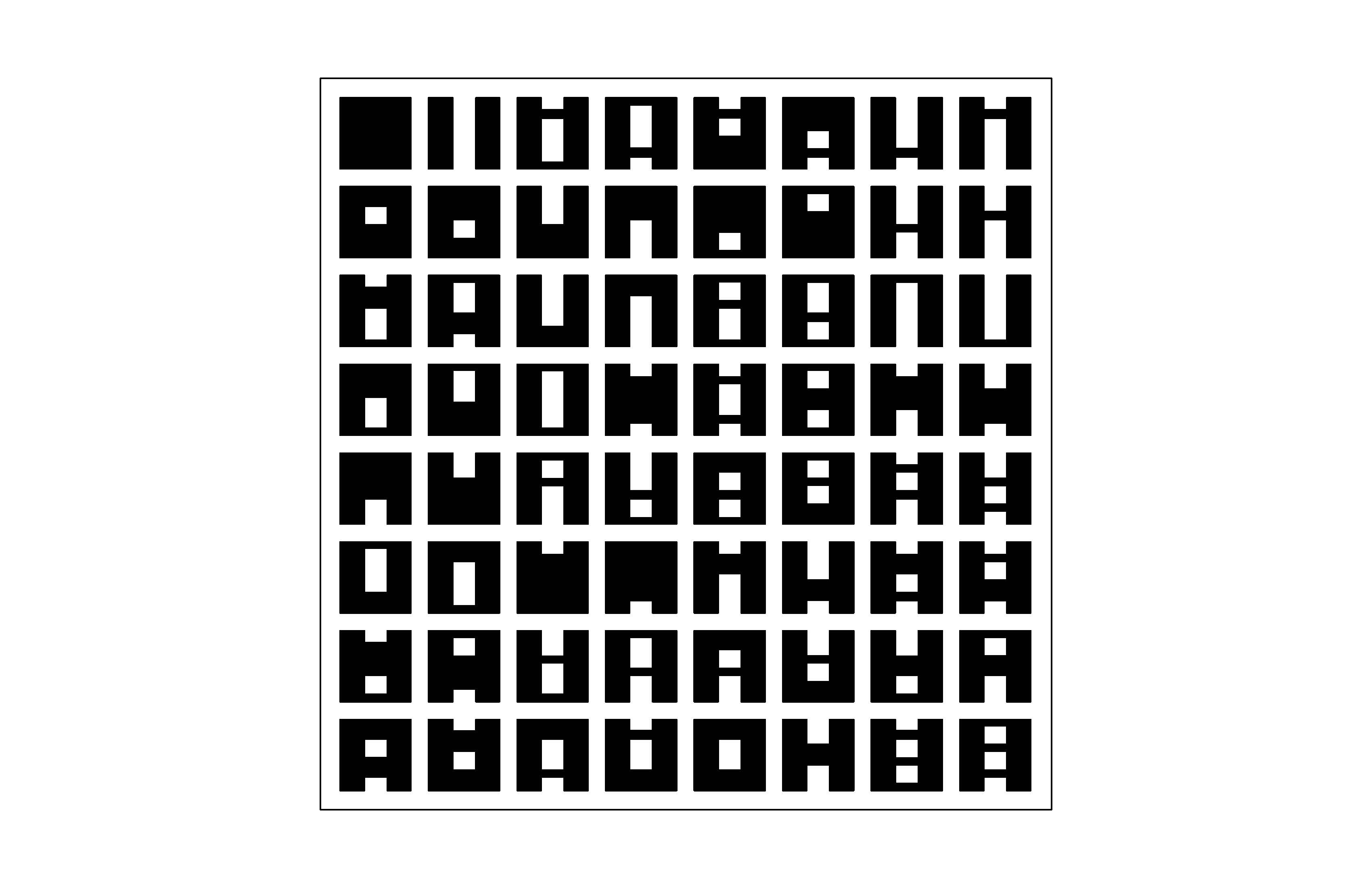
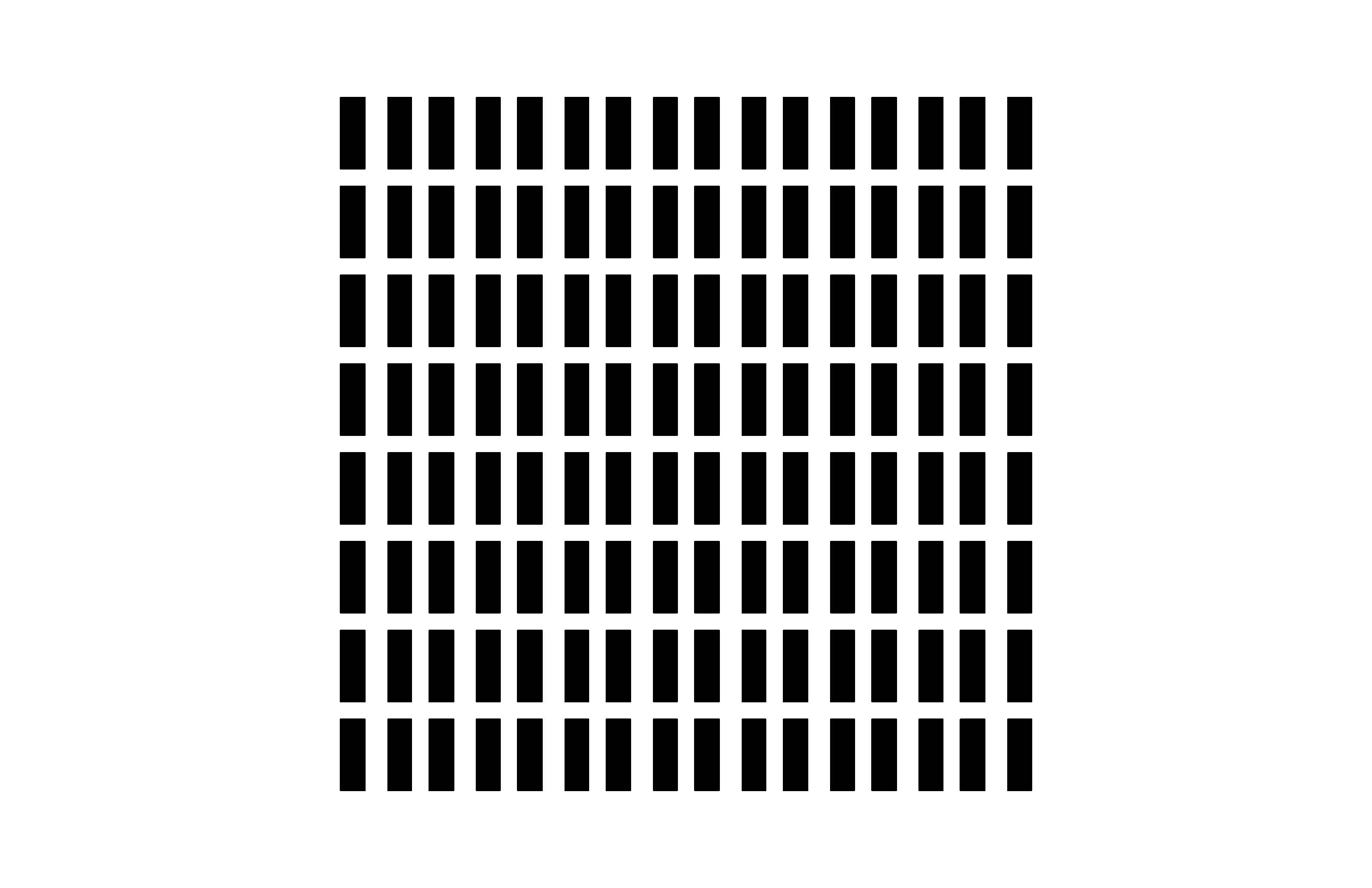
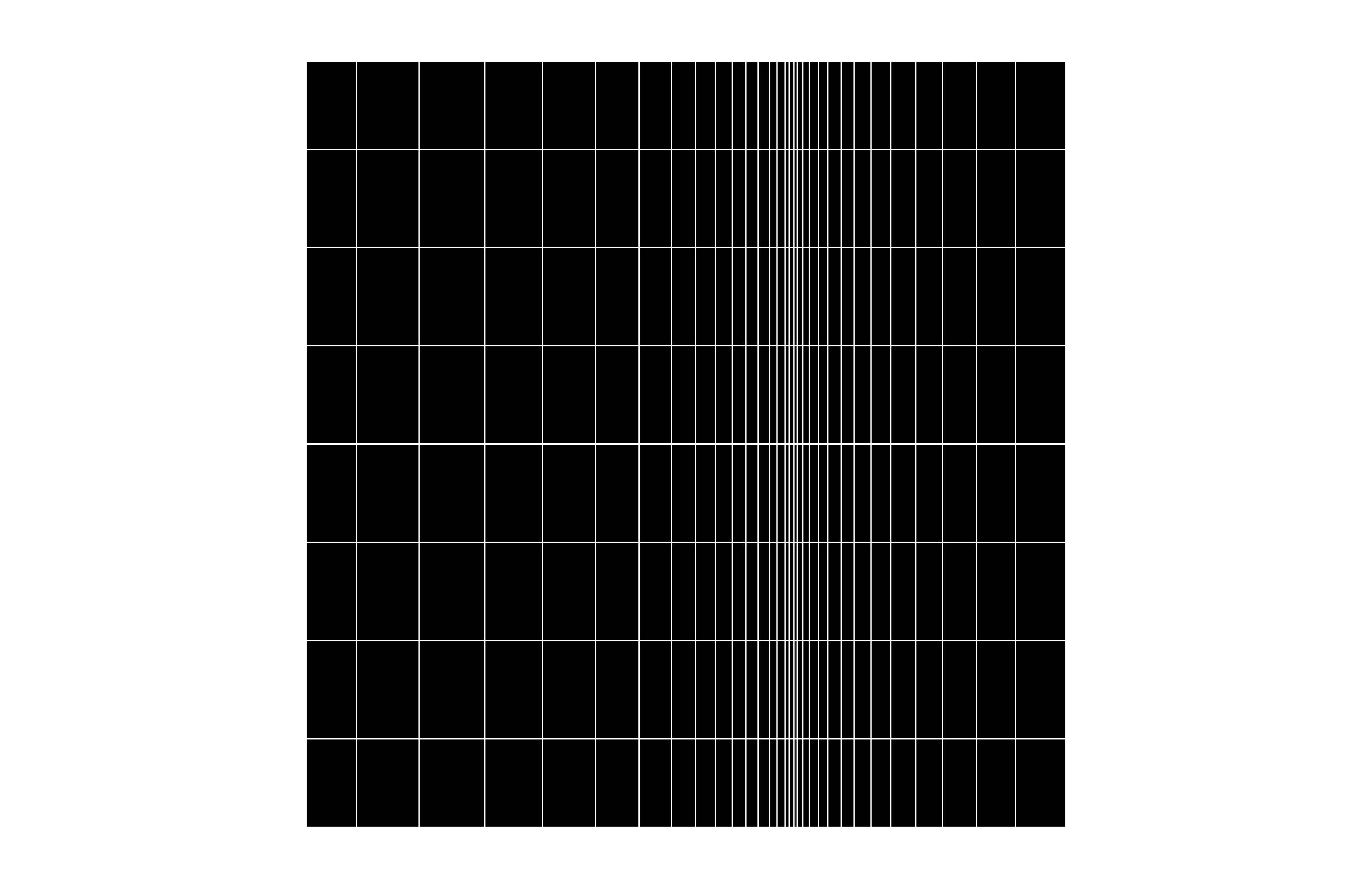
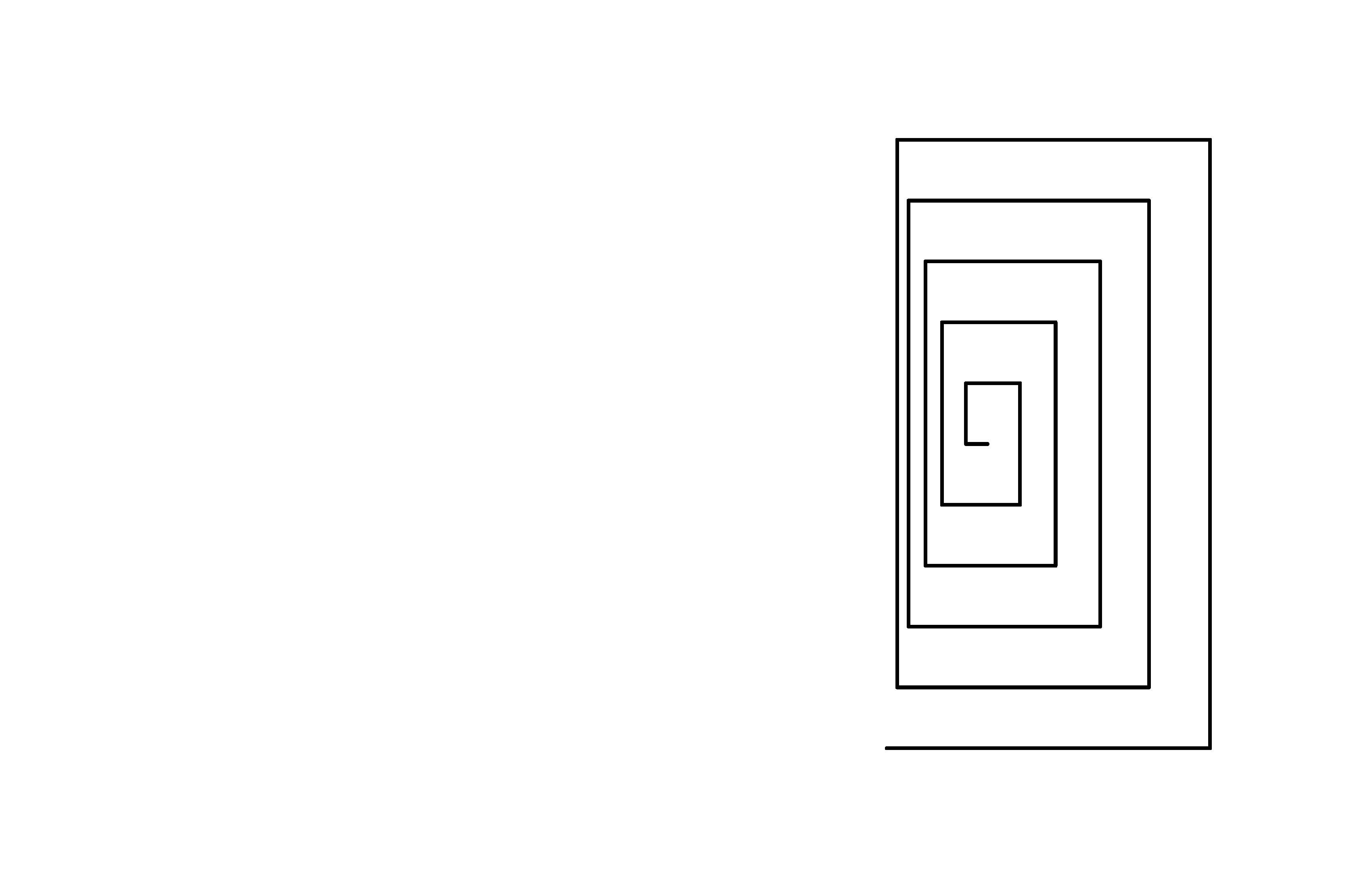
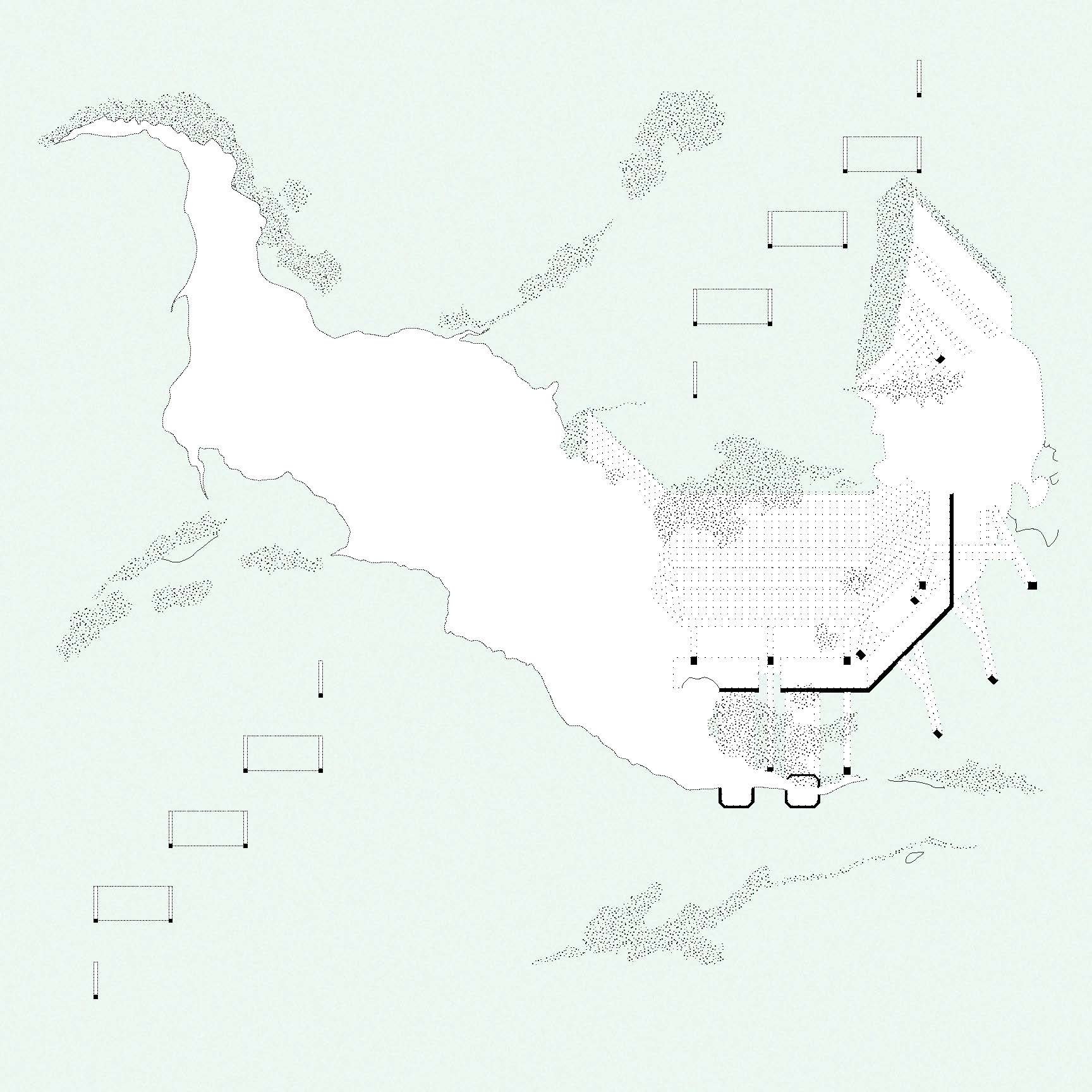
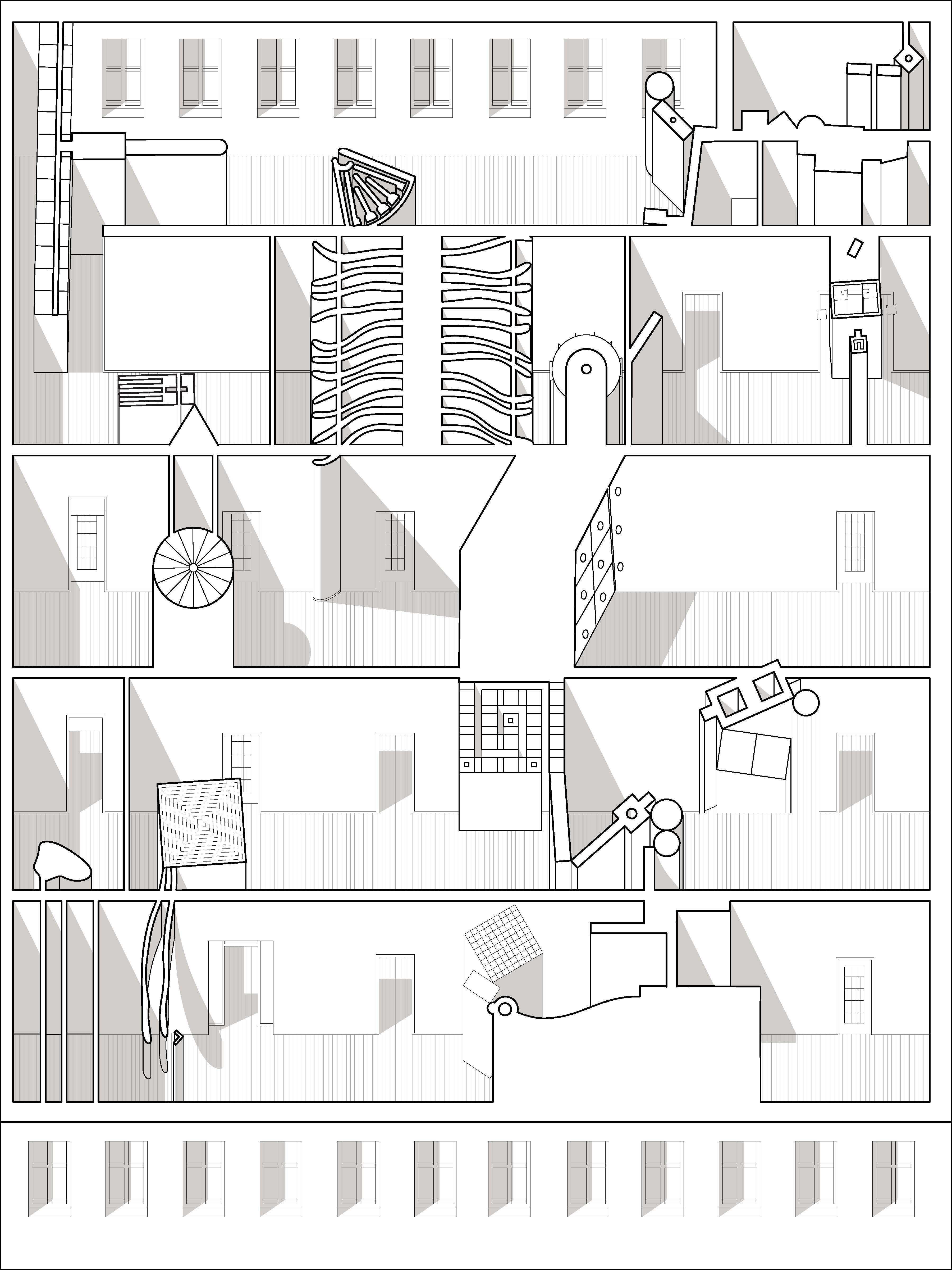
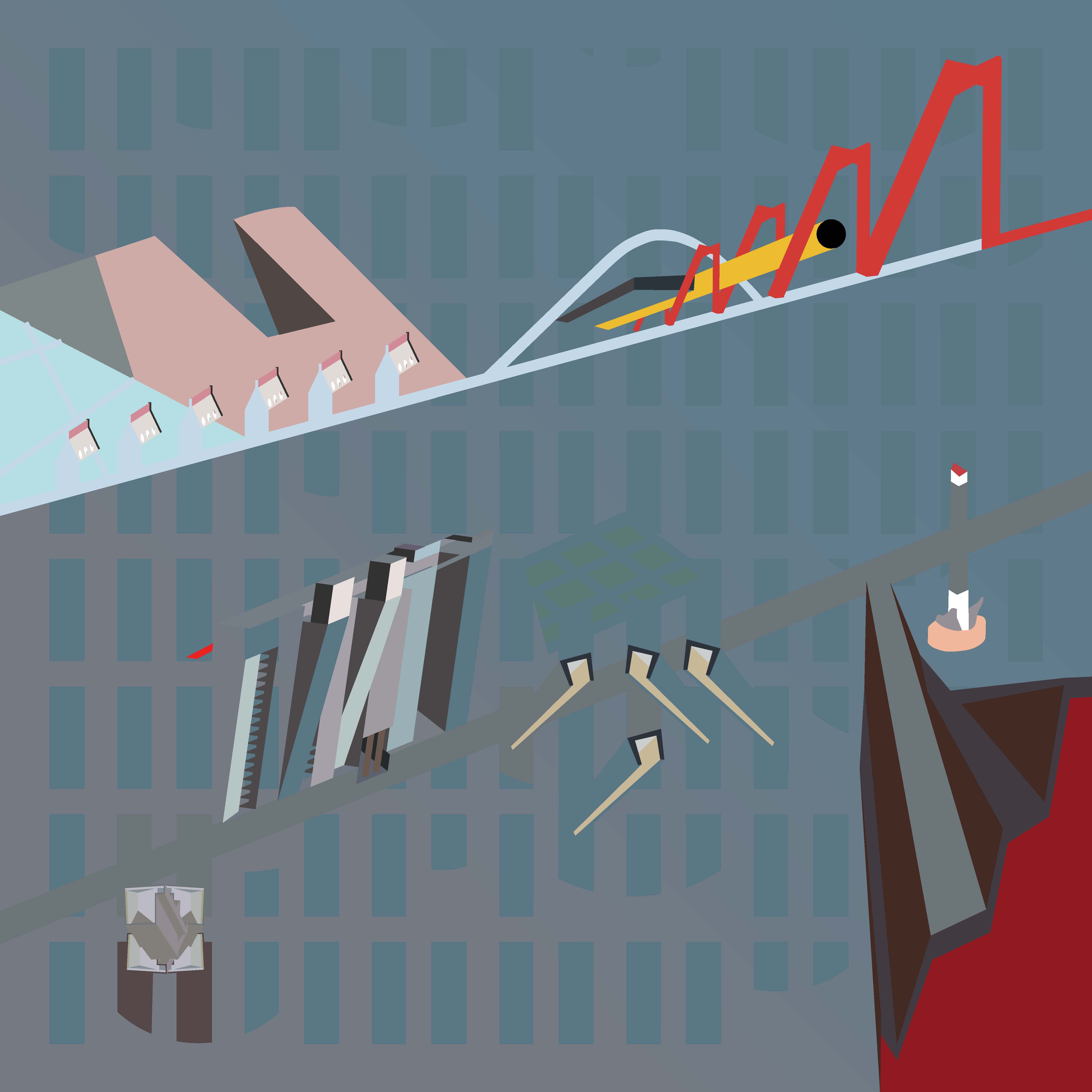
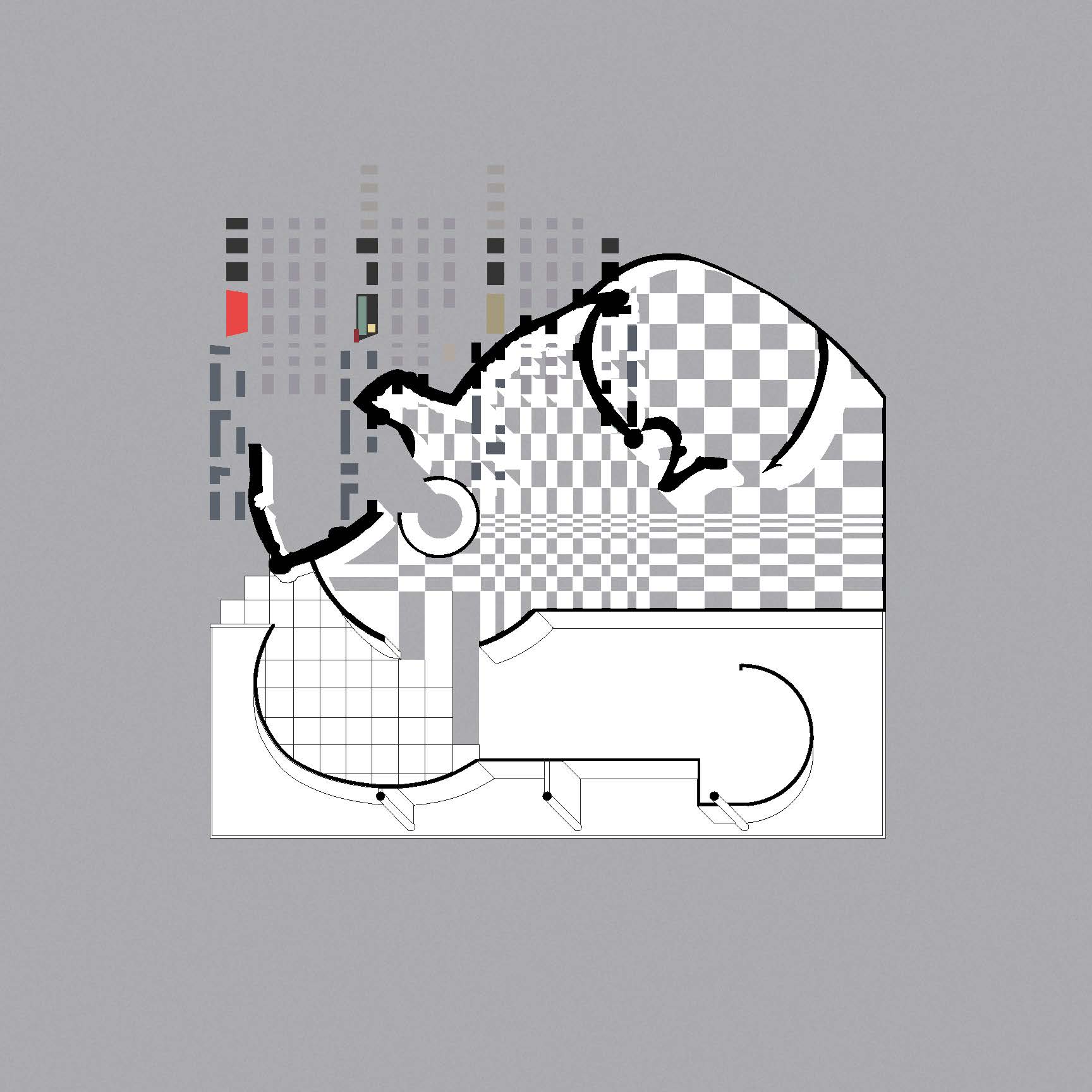
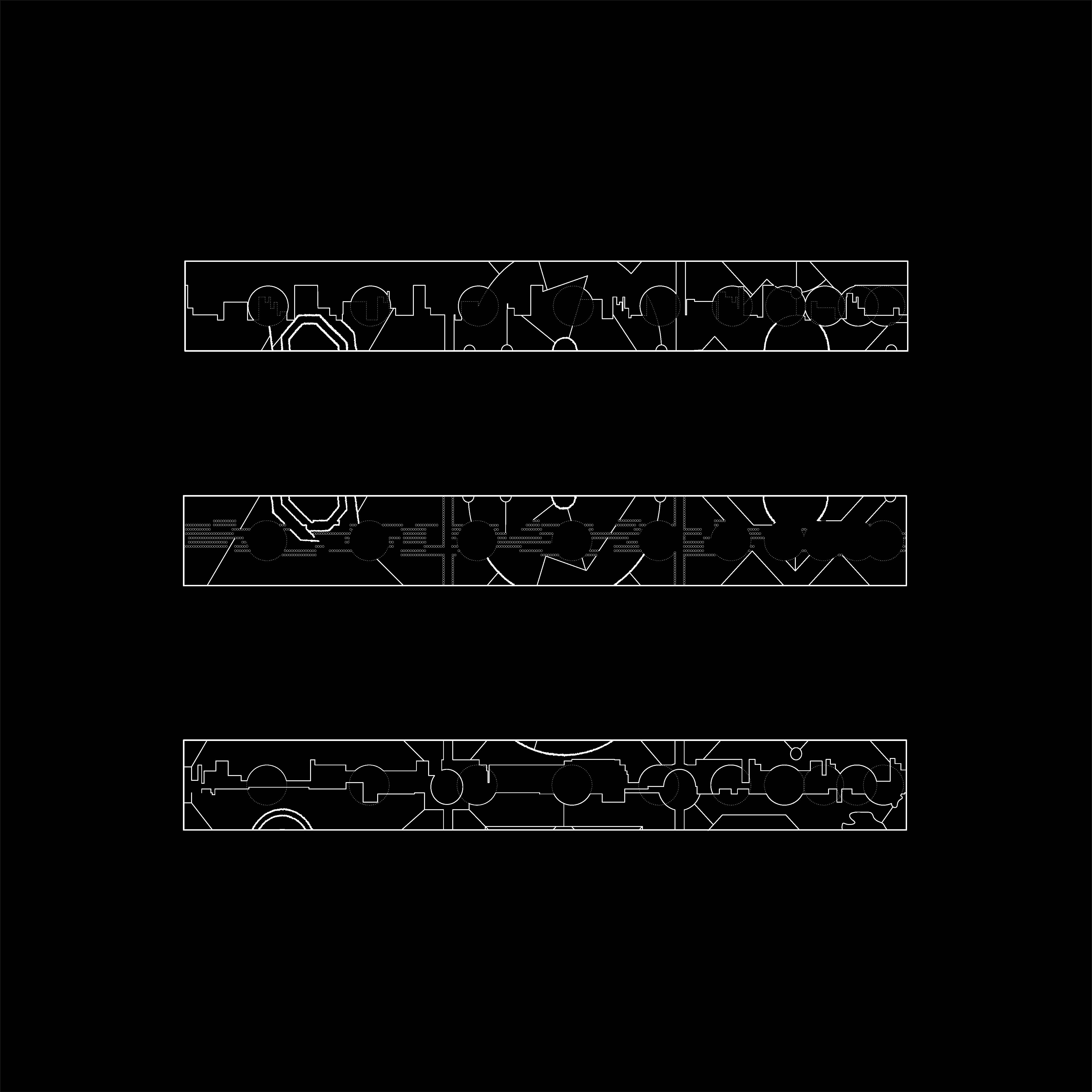

It's This Nor That
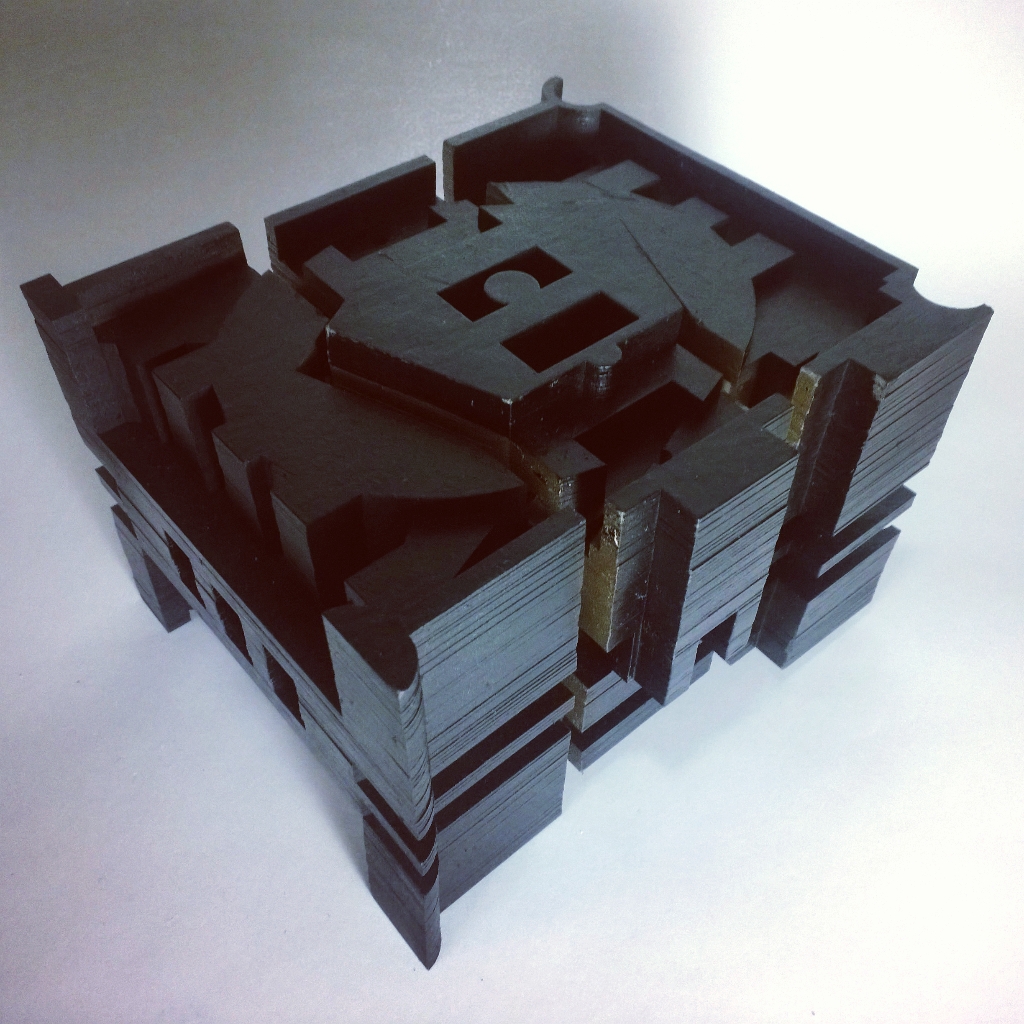
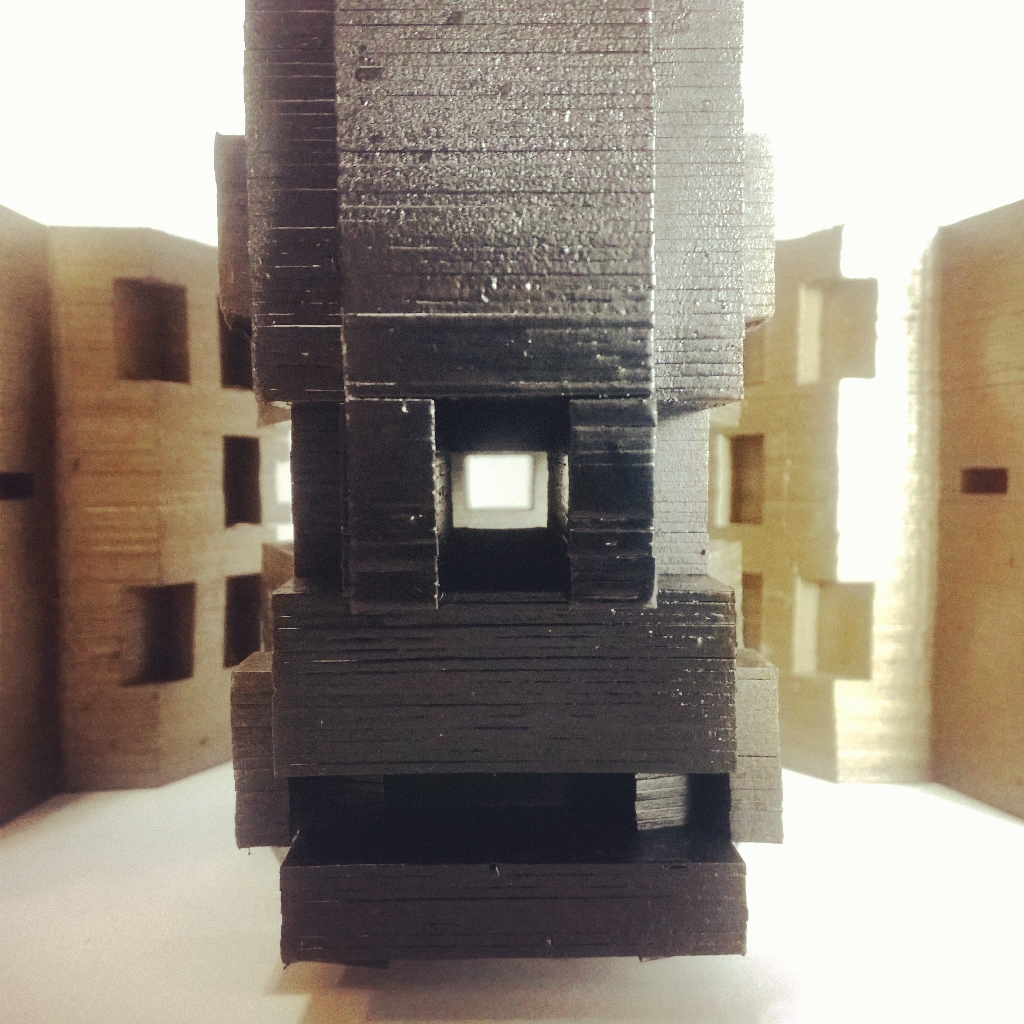
A model of The Thing is as good as the thing itself.
The Thing is both complementary and projective on its own in an attempt to give form to a field of hatches by "extracting" the linework that governed the drawing; i.e. The Thing is the physical manifestation of the drawing's linework. Unlike the soft density and ambiguity of the drawing the thing is tangible - legible, hard and certain. Although, just like the drawing, it maintains an exterior homogeneity, generality, anonymity or lack of identity while containing an inner richness only apparent by engaging with it.

Here's The Thing.
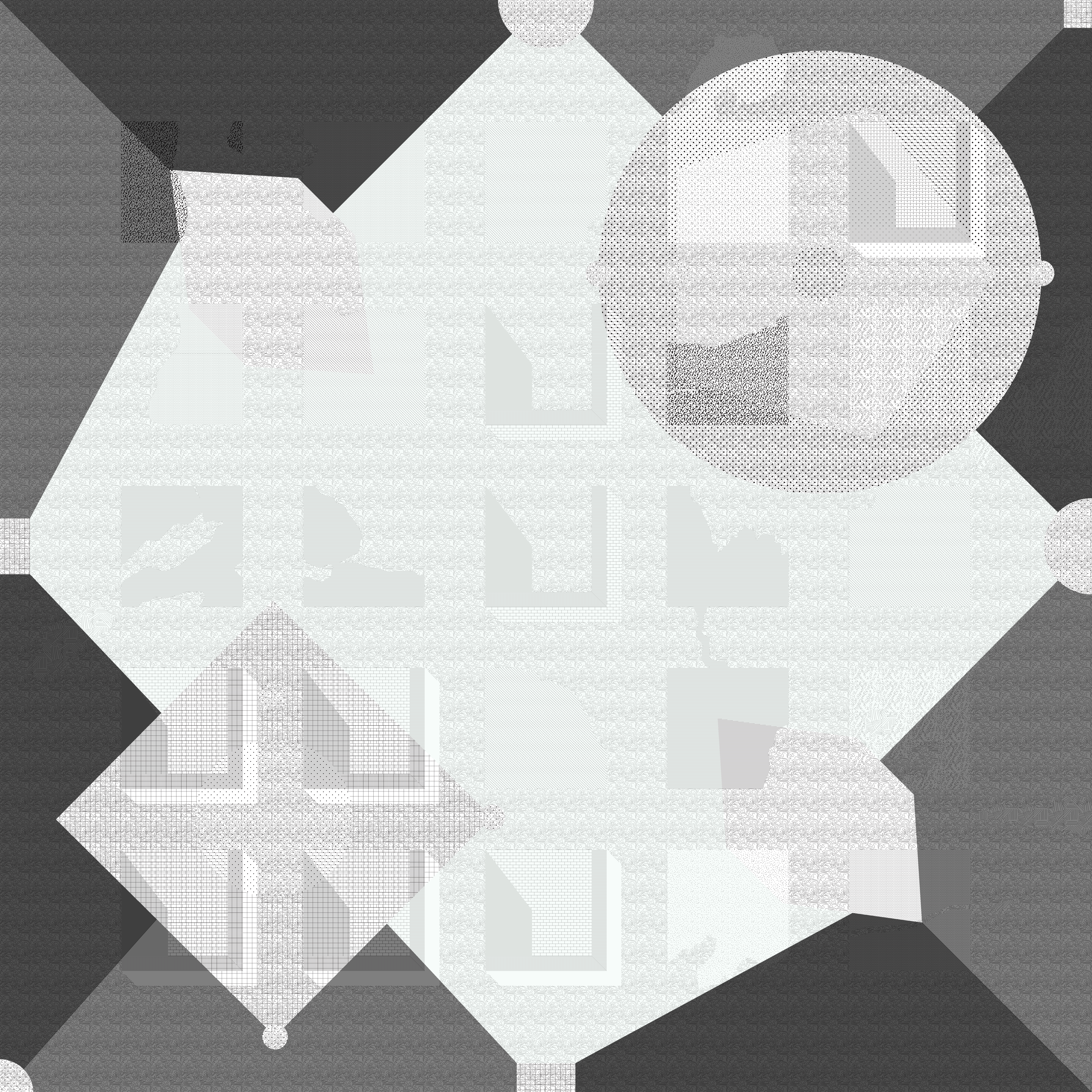
That's Here Nor There.
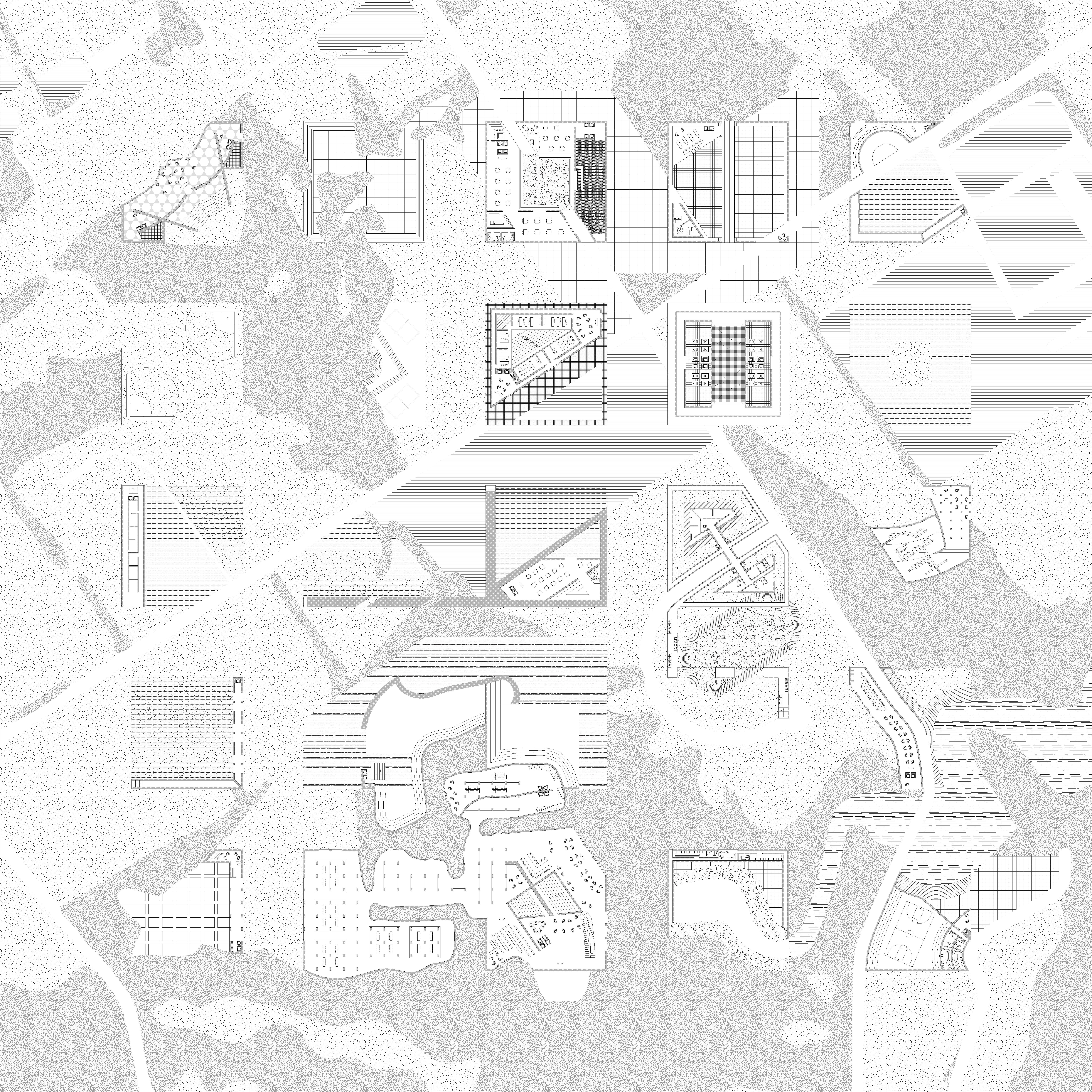
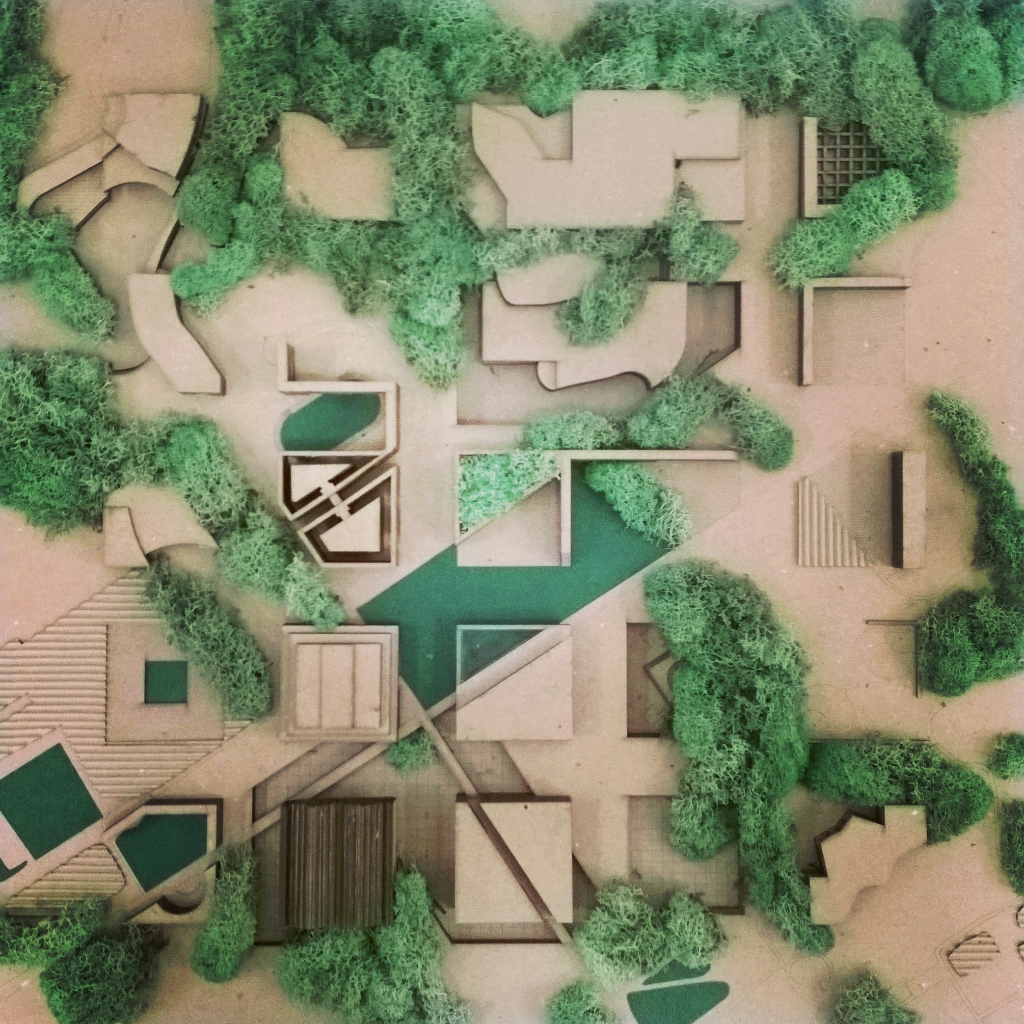
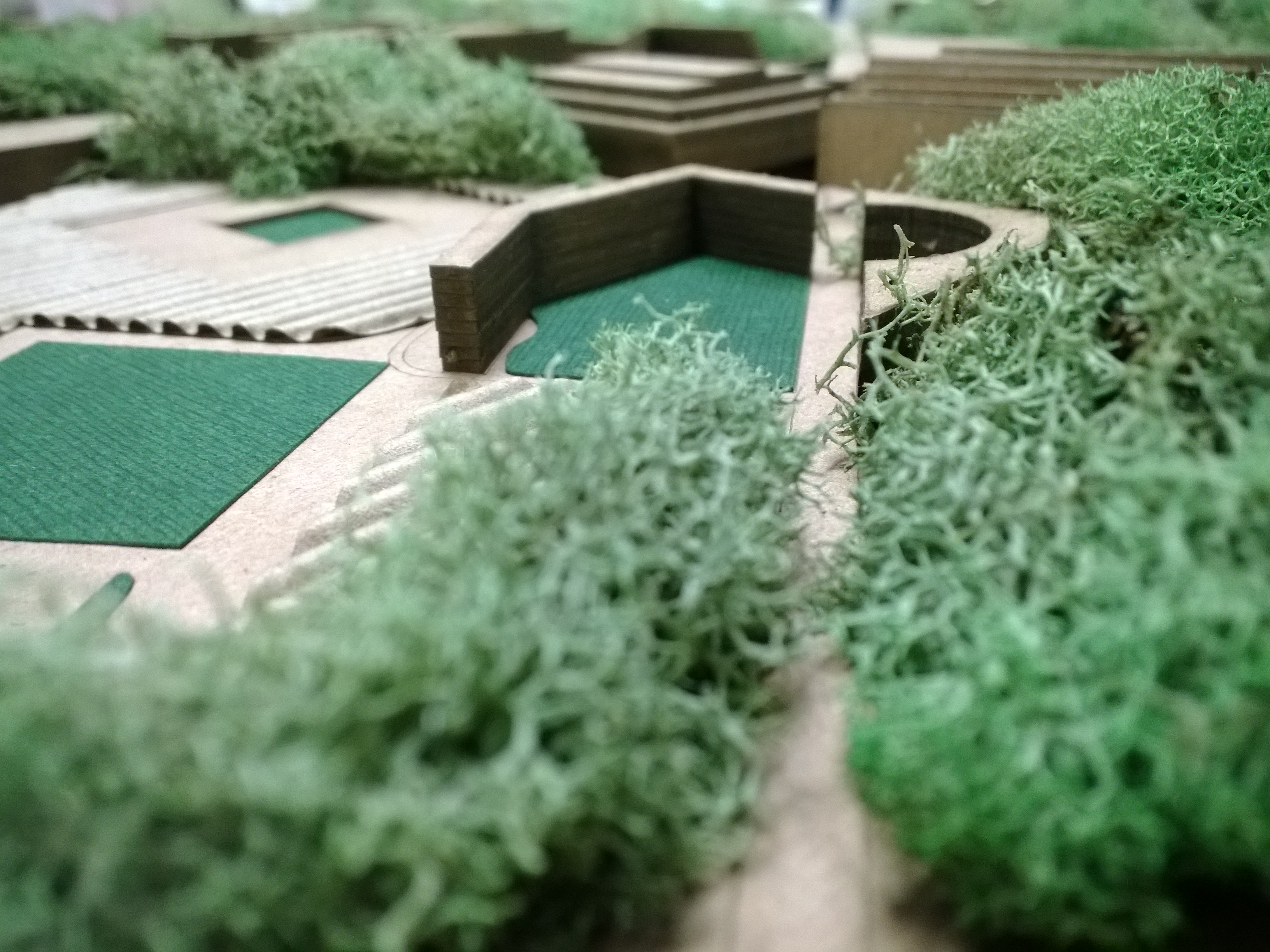
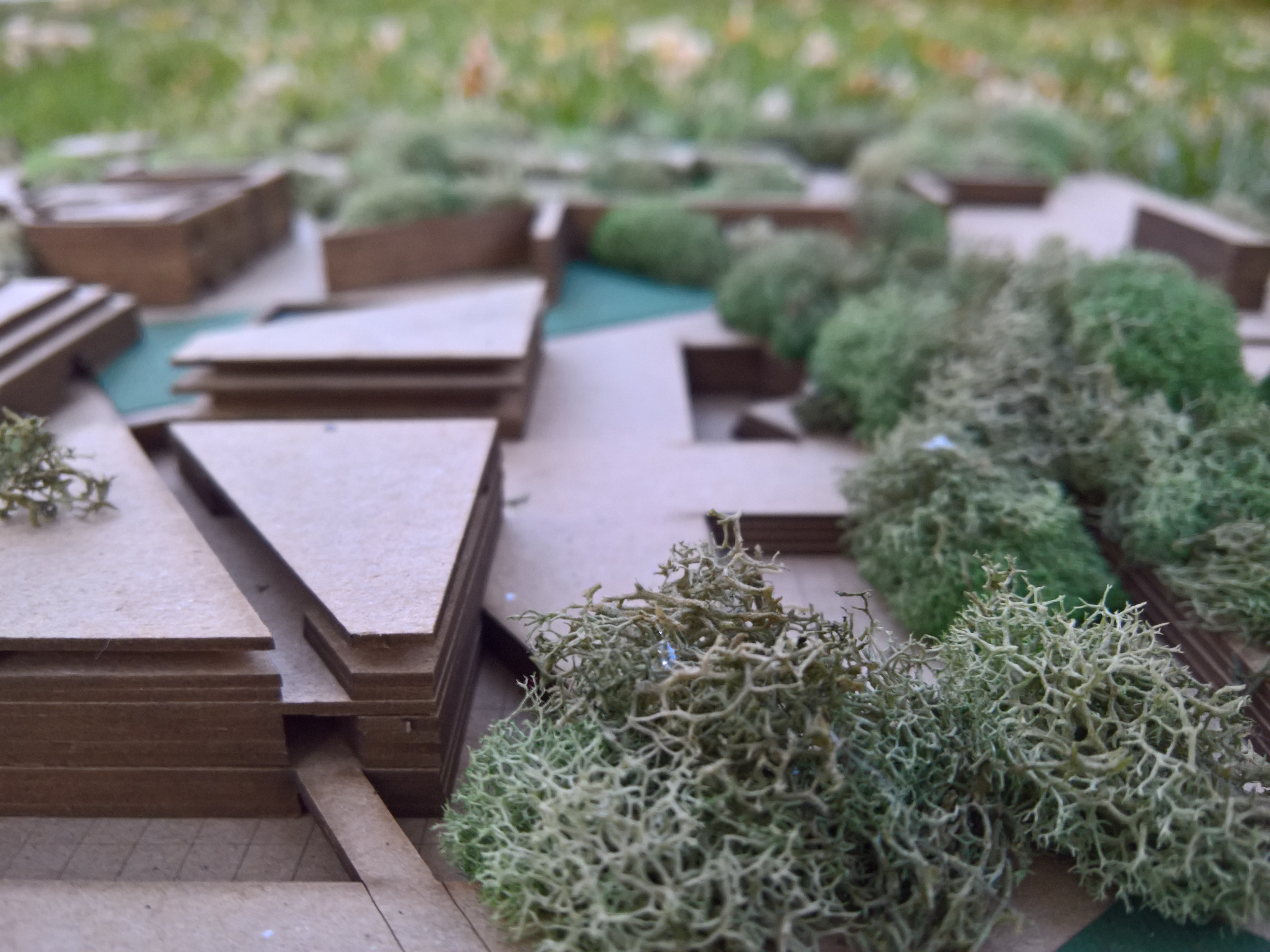
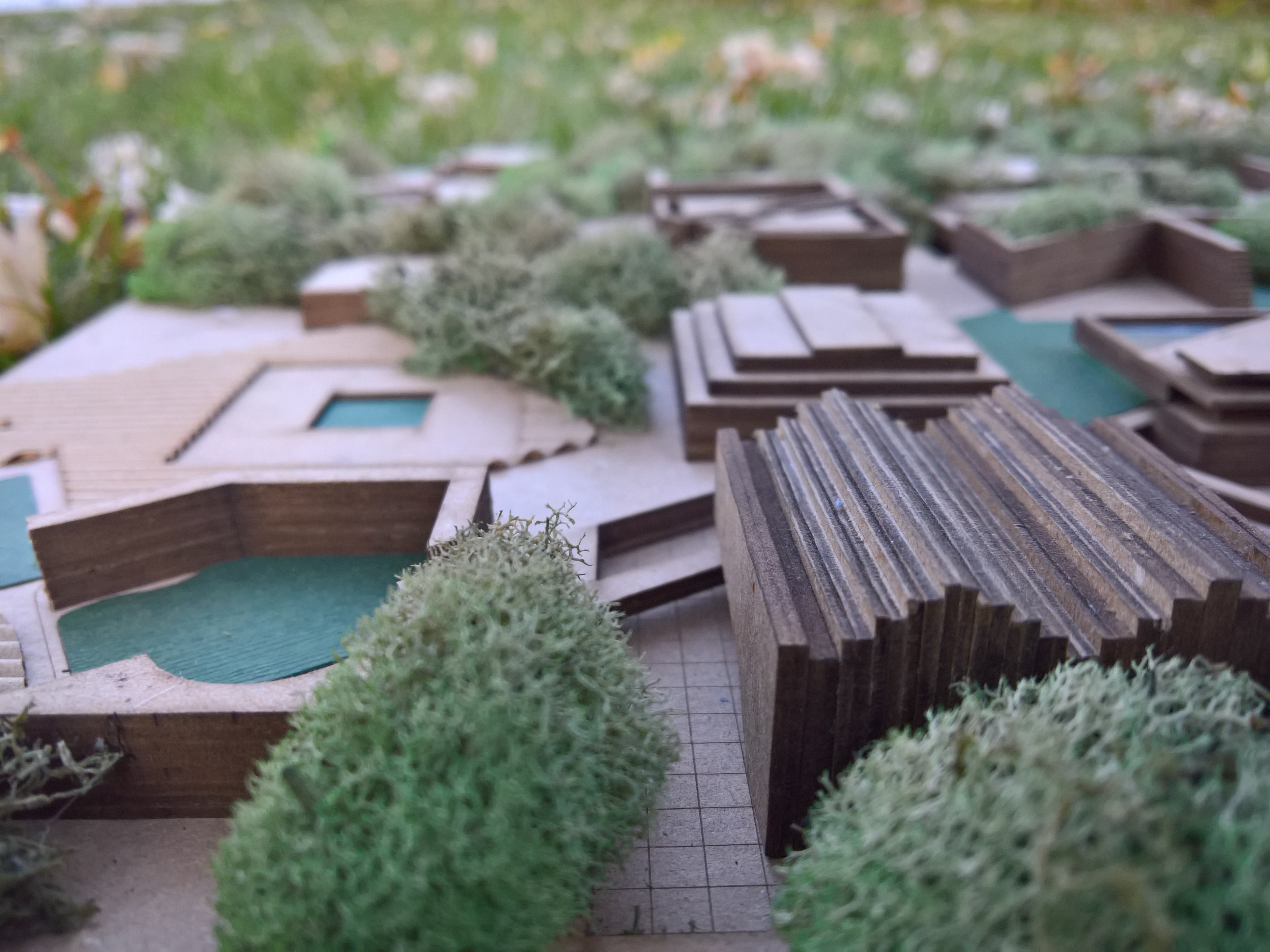


Drawing Conclusions
Vignettes celebrate the qualities of drawing elicited, derived or identified from the initial grid/scape drawings while explicitly calling out the contrasting ideas of labor in the 19th century and contemporary society. The particular use of white space in the drawings frame the subjects in their isolation, even while in the company of others.
